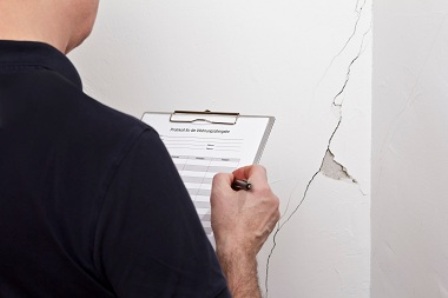For homeowners, maintaining the structural integrity of their home is paramount. However, the early signs of structural wear and tear can often be subtle and easily overlooked. If left unchecked, it can evolve from minor inconveniences to major hazards, potentially leading to exorbitant repair costs and diminishing the overall value of the property.
With that in mind, this comprehensive guide is designed to help you identify these red flags indicating it’s time for a structural engineer inspection of your home.
1. Visible Foundation Cracks
Large or expanding cracks in a home’s foundation are not merely aesthetic issues; they are indicative of underlying structural problems. These cracks can result from several factors, including soil settlement beneath the foundation, soil expansion and contraction due to moisture changes, or even improper construction techniques.
Such foundation issues can lead to uneven settling of the house, causing stress on the structural integrity of the entire building. Over time, if these cracks widen or new ones appear, it can signal ongoing movement, which may compromise the stability of the structure, making it unsafe for inhabitants.
2. Uneven Floors
Floors that slope or have noticeable dips are often symptoms of foundation settling or damage to the underlying support structure, such as joists and beams. This can occur from soil settling unevenly under the foundation or from water damage weakening the support structures. Not only do uneven floors pose a tripping hazard, but they also suggest that the house’s structural integrity may be compromised, potentially leading to more severe issues if not addressed.
3. Sticking Doors And Windows
Doors and windows that no longer operate smoothly or fit their frames correctly can point to several structural problems, including foundation movement or the warping of the house’s frame. This misalignment can occur from the foundation settling or shifting, causing the entire structure to move slightly. Such issues can gradually worsen, leading to more significant gaps and operational problems, indicating a need for structural assessment and potentially costly repairs.
4. Gaps Around Window And Door Frames
Visible gaps around windows and doors suggest that the house’s structure has shifted, leading to misalignment. These gaps are not just cosmetic flaws; they represent potential entry points for air and water, exacerbating structural damage through moisture intrusion and energy loss. Over time, these gaps can increase in size if the underlying structural issues are not addressed, leading to further damage and decreased home efficiency.
5. Bowed Walls Or Bulges
Walls that bow outward or have bulging sections indicate stress on the structure, often resulting from foundation issues or the failure of internal structural components like wall studs or support beams. This stress can cause the walls to deform, affecting the overall integrity and safety of the building. Bowed walls or bulges require immediate attention to identify and rectify the underlying cause before more extensive damage occurs.
6. Sagging Roof Or Leaky Roof
A sagging roof can result from weakened or damaged roof trusses or rafters, often due to water damage, heavy snow loads, or even termite damage. Similarly, a leaky roof can allow water to infiltrate the structure, causing rot and mold in the roof and ceiling areas. Over time, these issues can compromise the structural integrity of the roof, posing a risk to the safety of the home’s occupants and requiring significant repairs.
7. Cracks In Walls, Door, And Window Frames
Cracks in the walls, especially diagonal ones above doors and window frames, can signal differential settlement or lateral movement of the foundation. These cracks indicate that different parts of the house are settling at different rates or that external forces are causing the foundation to shift, putting stress on the structure. Such structural stress needs to be evaluated to prevent further damage to the home.

8. Water Damage And Mold
Water infiltration, whether from leaks, flooding, or high humidity, can lead to the growth of mold and rot in wooden structural components. Over time, this can weaken the structural elements, making them less capable of supporting the home and leading to potential structural failure. The presence of mold also poses health risks to inhabitants, making it crucial to address any signs of water damage promptly.
9. Termite Damage
Termites are notorious for causing severe damage to wooden structures, including beams, joists, and even the wooden parts of the foundation. Termite damage often goes unnoticed until significant harm has occurred because termites eat the wood from the inside out. Regular inspections for termite damage are essential, as compromised wooden structures can lead to structural failure.
10. Rust On Steel Components
Steel components within a structure, such as beams, columns, and fasteners, are critical for its stability and strength. When these components rust, their structural integrity is compromised, leading to a reduced capacity to bear loads and maintain the stability of the building. Rust on steel components requires immediate attention to prevent further deterioration and ensure the safety and longevity of the structure.
Addressing these warning signs promptly can prevent minor issues from escalating into major structural failures, safeguarding the home’s structural integrity and the safety of its occupants.
Conclusion
Ultimately, the well-being of a home is a continuous commitment that requires awareness, timely action, and regular maintenance. By staying informed about the warning signs of structural issues and acting decisively to address them, homeowners can safeguard their investment and enjoy the peace of mind that comes with owning a structurally sound and secure home.

